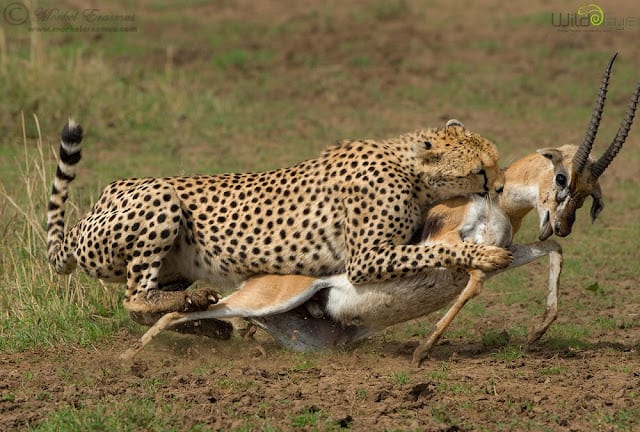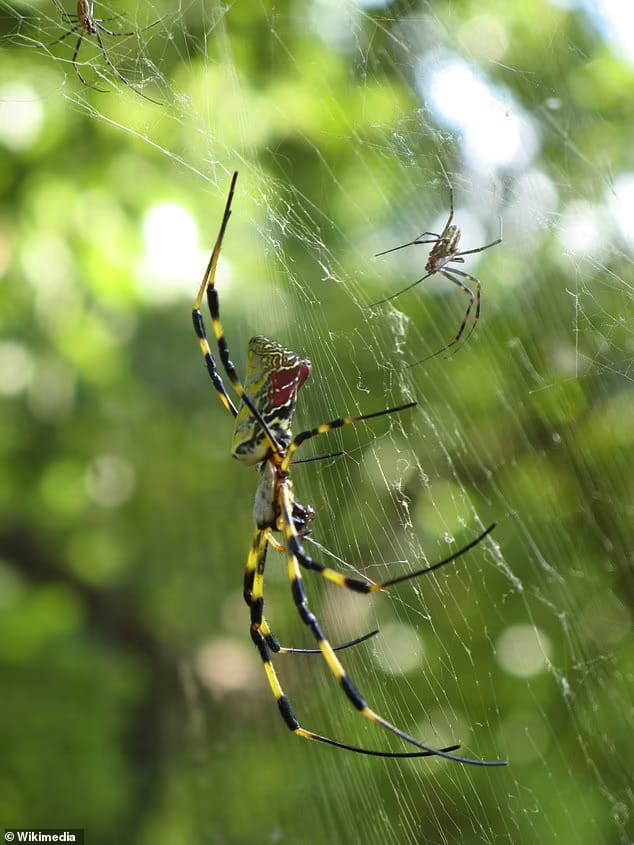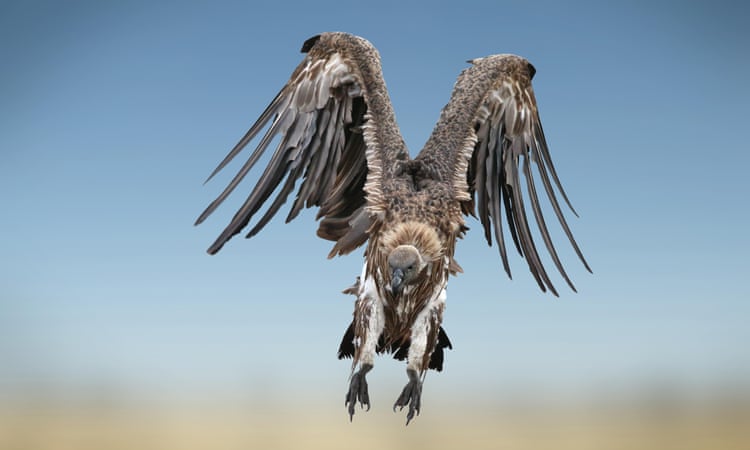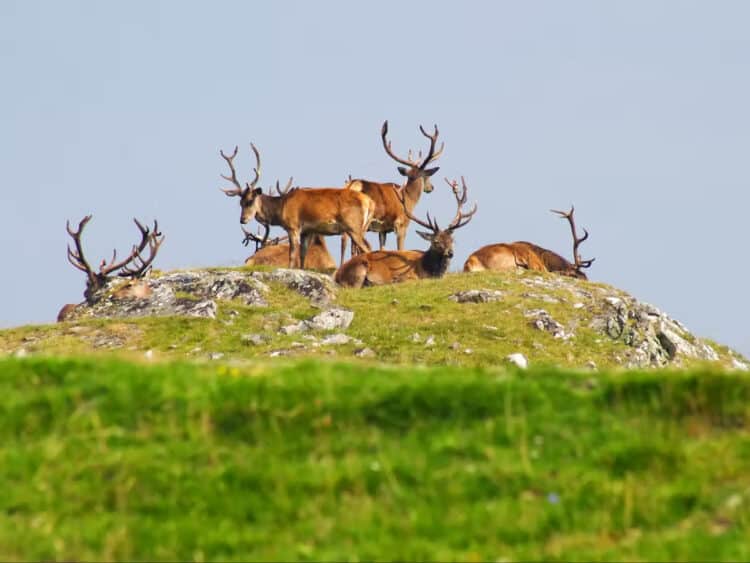If you’ve ever tried to photograph a cheetah hunt, then you would know that it’s over in a flash, and you often just can’t track the movement changes of the chase well enough. During our recent Wild Eye Great Migration Photographic Safari in the Mara Triangle (Kenya), we pulled into a cheetah sighting just as the hunt was about to begin. I quickly told the guests with me which settings to dial into their cameras, as I know from past experience that shutter speed and aperture need to be protected in these cases, and ISO should be the one to sacrifice.
As the chase began, the female Cheetah chased the Thomson’s Gazelle right past the nose of our customised Toyota Land Cruiser and then the take-down happened exactly 30 meters from our shooting position. Those of you who know me know that I photograph wildlife action primarily with the Nikkor 500mm prime telephoto lens. With it not being a zoom lens, getting the action too close can be a concern…
This photo is one of the sequence I captured last week. It’s not perfect – why?
Is it the light? The light is a bit harsh, mid morning actually – but it wasslightlyovercast so I think it came out nicely, so no.
It’s the framing, right?Because the gazelle’s one horn is “clipped” on the right of the frame. It’s full frame on that end, I actually ended up cropping a wee bit from the left and bottom to frame the overall action better.
Does it still work?
I think it does. Besides my obvious emotional connection to an action image like this which really portrays a split second in a frenetic life-and-death tussle…I think the horn is less of an issue than the cheetah’s tail, which is what I often end up “amputating” by poor framing. In this case, the cheetah’s grace and power in the final take-down of the gazelle is the focus (not to take anything away from the “oh crap” expression on the prey’s face)…so the horn becomes less of an issue.
What do you think? Would you ever delete a photo like this from your library because of the flaw I listed above? Drop me a comment below and share your thoughts!

Until next time…
Morkel Erasmus
Morkel Erasmus
I used to relish writing these kinds of “bio” pieces and would flaunt the odd impressive word and use dashing grammar to make it sound like I am a boundary-shifting photographer. These days I prefer stating it in much simpler ways, much more relatable ways, much more believable ways… The fact of the matter is this: I love Africa. I love its people, its wild places and its wildlife. I love being immersed in these places, observing and photographing the fall of light on the land and the daily lives of the creatures that call it home, and presenting the results to whoever will take a look. To me, nature photography is all about being in the moment, and capturing that moment in a way that can relate to someone who didn’t have the privilege of being there with me. Sometimes I am able to capture a unique vision of the scene before me, and sometimes I just capture it the way most folks would according to classical photographic guidelines. Yet I always enjoy sharing the images and experiences and imparting the knowledge I have, both in-the-field and later online or in presentations, workshops and courses. I also just simply enjoy capturing and sharing the beauty of God's creation! The greatest thing I’ve found about wildlife and nature photography in Southern Africa is the unity and familiarity of the community of people that share this passion. We come from all walks of life and all cultures and backgrounds, yet our passion for our natural heritage and our dream to see it preserved for future generations binds strangers together and fuels conversations around campfires long after other people have run out of conversation and energy. Join me on a WildEye adventure to experience this sharing community spirit and learn to anticipate that fleeting moment and be ready for it, learn to immerse yourself in the experience without losing focus of your photographic goals…and above all, learn to see Africa anew… because there are none as blind as those who look but do not see!
- Web |
- More Posts(111)







Leave a Reply